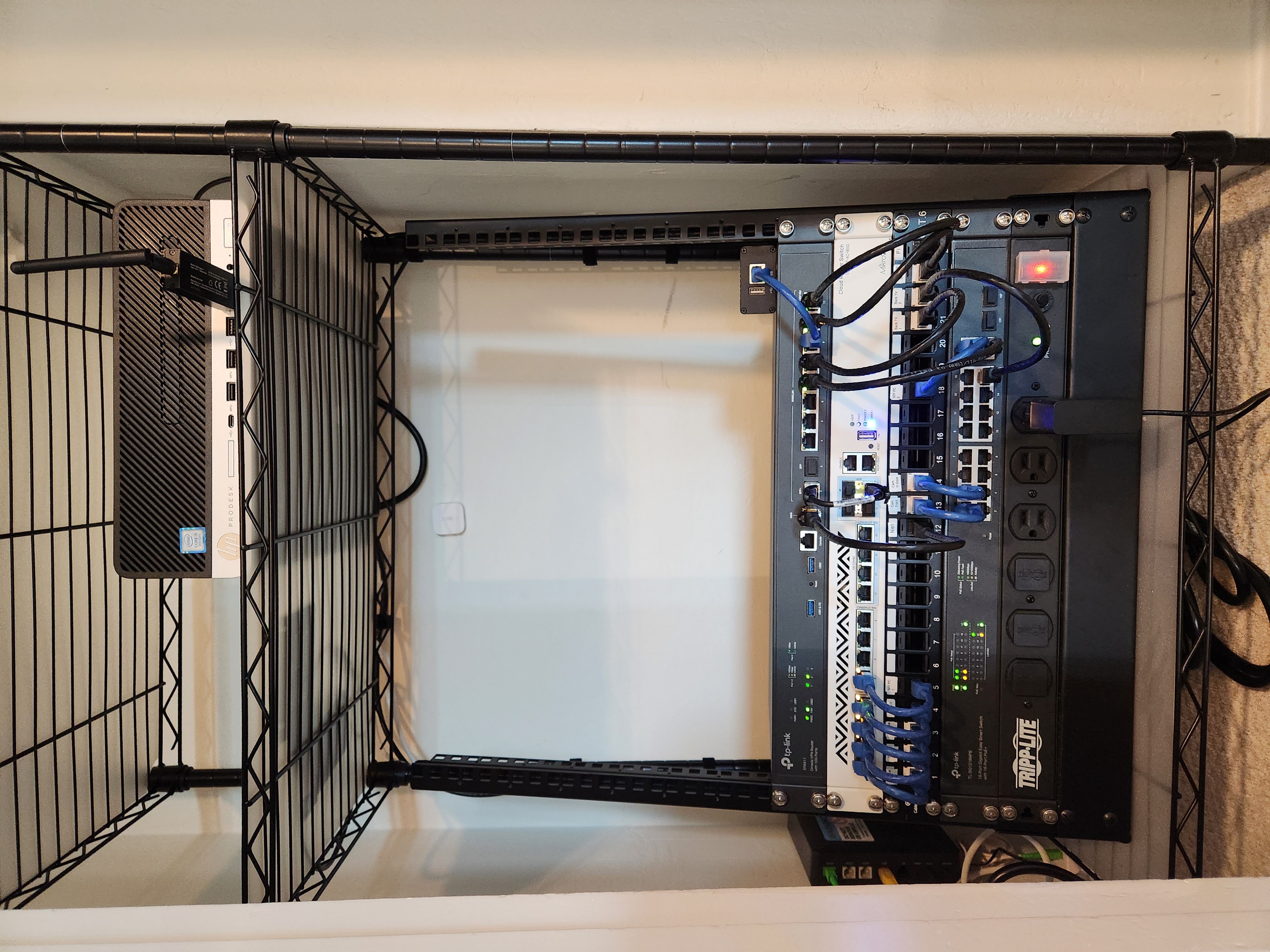I couldn't find a "Home Networking" community, so this seemed like the best place to post :)
My house has this small closet in the hallway and thought it'd make a perfect place to put networking equipment. I got an electrician to install power outlets in it, ran some CAT6 myself (through the wall, down into the crawlspace, to several rooms), and now I finally have a proper networking setup that isn't just cables running across the floor.
The rack is a basic StarTech two-post rack (https://www.amazon.com/gp/product/B001U14MO8/) and the shelving unit is an AmazonBasics one that ended up perfectly fitting the space (https://www.amazon.com/gp/product/B09W2X5Y8F/).
In the rack, from top to bottom (prices in US dollars):
- TP-Link ER8411 10Gbps router. My main complaint about it is that the eight 'RJ45' ports are all Gigabit, and there's only two 10Gbps ports (one SFP+ for WAN, and one SFP+ for LAN). It can definitely reach 10Gbps NAT throughput though. $350
- Wiitek SFP+ to RJ45 module for connecting Sonic's ONT (which only has an RJ45 port), and 10Gtek SFP+ DAC cable to connect router to switch.
- MikroTik CRS312-4C+8XG-RM managed switch (runs RouterOS). 12 x 10Gbps ports. I bought it online from Europe, so it ended up being ~$520 all-in, including shipping.
- Cable Matters 24-port keystone patch panel.
- TP-Link TL-SG1218MPE 16-port Gigabit PoE switch. 250 W PoE power budget. Used for security cameras - three cameras installed so far.
- Tripp Lite 14 outlet PDU.
Other stuff:
- AdTran 622v ONT provided by my internet provider (Sonic), mounted to the wall.
- HP ProDesk 600 G5 SFF PC with Core i5-9500. Using it for a home server running Home Assistant, Blue Iris, Node-RED, Zigbee2MQTT, and a few other things. Bought it off eBay for $200.
- Sonoff Zigbee dongle plugged in to the front USB port
- (next to the PC) Raspberry Pi 4B with SATA SSD plugged in to it. Not doing anything at the moment, as I migrated everything to the PC.
- (not pictured) Wireless access point is just a basic Netgear one I bought from Costco a few years ago. It's sitting on the top shelf. I'm going to replace it with a TP-Link Omada ceiling-mounted one once their wifi 7 access points have been released.
Speed test: https://www.speedtest.net/my-result/d/3740ce8b-bba5-486f-9aad-beb187bd1cdc
